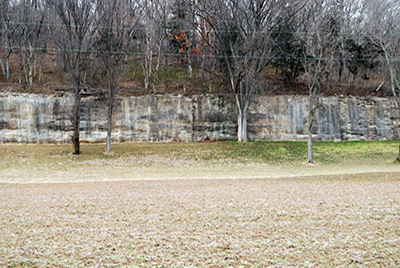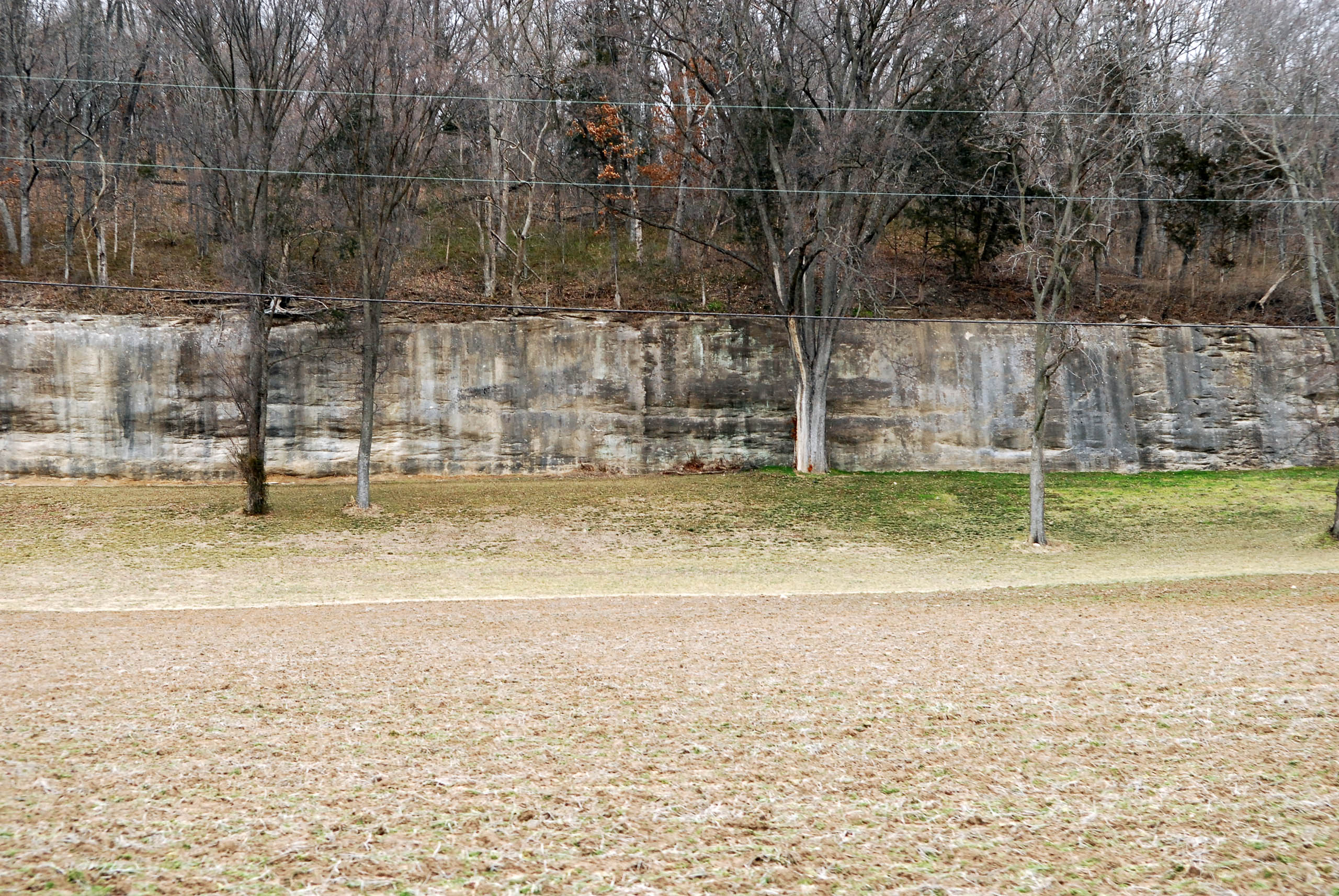



Two miles southeast of Prairie du Rocher, along an exposed face of the limestone bluff, is an undercut portion of rock that served as a nominal form of shelter for native people as long as 9,000 years ago. Because of the regular flooding and sedimentation of the river in this area, numerous layers of inhabitation are recorded in this modest cliff edge—with over 28 feet of sediment holding artifacts and evidence of both short- and long-term inhabitation. A profusion of plaques and signs provides no shortage of interpretive material. And as if learning from this pre-historic mode of inhabitation, this stretch of Bluff Road offers an extraordinary set of contemporary buildings that use the rock face of the bluff as support. Metal sheds, in many cases, are carved out to fit against the bluff edge, and hog pens are built into slight overhangs.